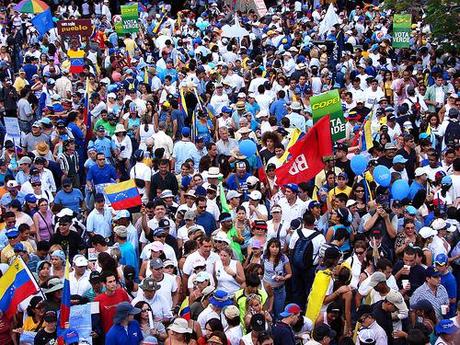
Image from djibnet.com
Is there racial discrimination in Venezuela?
No.
This is the answer you will get from about 90 per cent or more of the population here in Venezuela. There is no racial discrimination, only there are issues with classes, you would be told.
Venezuela presents a very difficult fabric which is interwoven and mixed to the point nothing really stands on its own purity; Venezuelans are mestizos (mixed) with a rich background that spans from both directions.
In fact, no matter how dark or light-skinned Venezuelans are, most of them will tell you that they are mestizos. There is a tendency of generalizing and drawing similarities making everyone racially the same.
It is also very common for families to have some children that look very light-skinned and refer to them as Catires and have others with the darkest skin and refer to them as Negros. But all this reference is non-discriminatory and quite acceptable.
In the year 2004, there was a TransAfrica Forum which took place in Caracas. Though most people would say there is no discrimination, the delegates in forum concluded that there is racism and pointed out different instances of its usage in Venezuela.
According to the forum black people can be referred as ‘monkeys’ which is derogatory term Venezuelans use for people of African descent. They were also able to compile a list of over 1,000 racist comments that have appeared in Venezuela’s media.
In fact, during 1980′s there existed places of social gathering that black people were not allowed to patronize regardless of their social standing.
But what makes it so difficult to pin down racism or even defines it in the context of Venezuela is the fact that, unlike other countries in Europe, Asia and North America, Venezuelan society is more homogenous irrespective of its skin color differences.
This makes it inherently difficult since there are no clear lines of distinctions that can be drawn culturally to pinpoint where racism really lies. Everyone eats the same things, speak the same language, believe in the same beliefs and feel there is no racism.
But recently I was speaking to a Chavista who noted that racial lines are more evident in politics, and classes. Most dark-skinned people tend to belong to the lower class and live in the poor barrios than the light-skinned people.
The reason for this being that, unlike most descendants with Portuguese, Italian or Spanish roots who have had access to both political and economic power from colonial times, most black people are ascending from the shacks of slavery.
Most of the dark-skinned people are Chavistas and support the socialism of the 21st Century and they are the beneficiaries of the government affirmative actions while on the other hand light-skinned people are the opposite.
He also made a comment of how telenovelas opt for light-skinned people for the lead roles, leaving the chauffeurs and cooks and other marginal roles to those with darker complexions.
There is a very interesting paradigm. The greater population believes that there’s no racial discrimination while on the other hand specialists that have conducted researchers note that there is racism.

